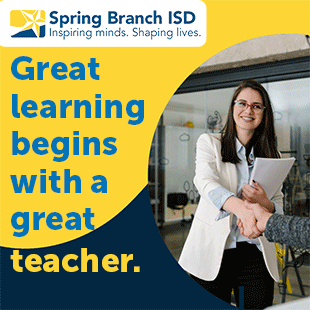
This is part two of our series Breaking Down the Wall. View Part 1 here.

Dan Alpert: Debbie and Diane, tell us more about the urgency for using an assets-based versus a deficits-based approach when working with our English learners (ELs).
Think about how many of us focus our attention on ELs by poring over data about their progress learning English, comparing their performance on standardized tests and rates of graduation with non-EL peers, and lamenting what we perceive as THE problem: that our ELs are not learning English fast enough. And how many of us then find ourselves responding to what we believe students don’t possess (English) as opposed to what they do or have developed as a result of being reared in a language and culture other than U.S. English?
While this type of data collection and analysis is helpful, it hasn’t resulted in closing the opportunity gaps between ELs and their English-fluent peers. Research in psychology and education demonstrates that focusing on people’s strengths—that is, what they already possess inherently or have learned and experienced—can lead to far greater academic and social-emotional success than does focusing on what we perceive as their weaknesses. It requires that we identify ELs’ and their families’ invaluable personal, cultural, social, and life experiences and draw from these understandings to create programming that is meaningful and purposeful for our students.
An example is a chemistry teacher whose students are studying thermal reaction. He finds ways to connect the curriculum with his students’ experiences. He engages them in exploring common products that are created using this process. As a model, he shows how a metal table is made. He tasks small groups to explore additional products made from the thermal process. One group excitedly discusses how jewelry is created—another, how it is used to repair their families’ cars. He invites the father of an EL to his class to demonstrate the process he uses as a plumber to weld pipes together. Enacting such practices supports our using an assets-based approach.
“Research in psychology and education demonstrates that focusing on people’s strengths—that is, what they already possess inherently or have learned and experienced—can lead to far greater academic and social-emotional success than does focusing on what we perceive as their weaknesses.”
Dan Alpert: Aside from the obvious asset of multilingualism, what are examples of some common assets that our multilingual students (and their families) hold?
When we look at students’ assets, we should begin by expanding our view beyond what we are required to do according to federal regulations to see more than the language a child uses to communicate, the level of English proficiency, and performance on state-approved assessments.
Broadening our perspectives and a deeper understanding of our students can greatly help us to build more successful programming. To do this, it’s critical to learn as much as we can about students’ and families’ personal, social, cultural, and life experiences and partner with them on behalf of their children’s academic and social-emotional development. This information is invaluable for building programming that capitalizes on students’ and families’ strengths and assets and welcoming and valuing their participation. Whether we do this in a school registration office, in a welcome center, while families are taking a tour of the school, or in a classroom or home visit, it’s critical to demonstrate a genuine interest in partnering with families and honoring, valuing, and acknowledging the many strengths that they share with us.
The following suggested questions are intended to bolster our efforts from the start:
- What makes [name of child] special?
- What particular talents and skills would you like me to know about [name of child]?
- What subjects does [name of child] enjoy learning at home and in school?
- What are things you enjoy doing as a family?
- In what ways were you involved in [name of child’s] prior school or would like to be involved here?
- What special talents or interests would you consider sharing with students in [name of child’s] class (e.g., work interest and hobbies)?
Questions such as these also convey that, as caring educators, we believe in the importance of getting to know students and their families, and that we are comfortable with and embrace family involvement.
Dan Alpert: What are some ways that classroom teachers can learn about the assets of multilingual learners?
One way classroom teachers can build bridges and help foster connections with multilingual learners is to have them share their very own stories. Teachers of younger students can first model the task of students drawing a personal narrative storyboard or series of images, then have students write a response to the sentence prompt: “What I wish my teacher knew about me.”
Teachers can ask older newcomer students to write personal narratives. Both groups of students could use technology to support their writing. We suggest that teachers have models of student work from students at different levels of English proficiency as well as from different linguistic and cultural backgrounds to share. To begin this project, teachers can interview students and ask them to talk or write about themselves in their home languages, offering appropriate scaffolding for these tasks.
Each of these activities supports the process of learning more about students’ lives and experiences so that educators develop a better understanding of the linguistic and cultural assets that students bring to their classrooms. We offer one piece of advice, which is to be sure to give multilingual learners the choice to tell as much of their stories as they feel comfortable with or to have the option to not share them at all, as students may have experienced traumatic events that they wish not to share.
Students and their families who are open to the idea could also publish their stories in school newspapers to reach a wider audience. We also suggest inviting parents and family members into the classroom and having a celebration to showcase students’ stories.
Dan Alpert: What are some strategies for challenging deficit thinking that may pervade the culture of a school?
To disrupt deficit thinking, we encourage teachers and administrators to share news of multilingual learners’ successes—both great and small—within the school and the district. Many examples exist of ways to showcase multilingual students’ growth academically as well as personally. For instance, we often see newspaper articles published each spring about current or former English learners who have become high school valedictorians. These success stories provide one concrete vehicle for those who may operate from a deficit perspective to take note of one way in which a multilingual learner contributes positively to school culture.
Another way to challenge deficit thinking at the school level is to invite successful multilingual learners, including those in college, receiving technical training, or in careers, back to your school in person or by video to highlight their success and also share what helped them achieve. If you hold such an event, be sure to invite the whole school to see the assets that these students bring and be sure to ask students about the role their home languages and cultures played in their success.
On an individual level, teachers may notice when others make deficit-based statements about multilingual learners. These often-uncomfortable interactions actually provide an opportunity to support a colleague’s shift from a deficit- to an assets-based disposition.
We encourage teachers to be thoughtful about challenging others’ thinking in order to do so without permanently disrupting crucial relationships with colleagues. All educators—no matter what their title or how many years of experience they have—are positioned to serve as agents of change when it comes to a colleague gradually shifting to an assets-based view of multilingual learners and their families. If you encounter a colleague making deficit-based statements, we suggest first listening to understand the reason for your colleague’s deficit perspective. Acknowledge where the deficit or frustration might come from, offer some concrete help to that colleague to better support their multilingual learners, and follow through on your offer.
Debbie Zacarian, EdD, is known for her expertise in strengths-based leadership, instruction, and family partnership practices with diverse student and family populations. She provides professional development, strategic planning, and policy work with school districts and state agencies and organizations.
Diane Staehr Fenner, PhD, is the president of SupportEd, a woman-owned small business based in the Washington, DC, region that provides EL professional development and technical assistance to schools, districts, states, and the U.S. Department of Education.
Debbie and Diane are coauthors of Breaking Down the Wall: Essential Shifts for English Learners’ Success (Corwin, 2019).
Dan Alpert is publisher and program director for equity and professional learning at Corwin.





